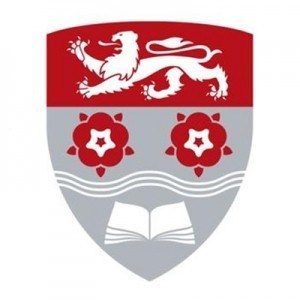Photos of university / #lancasteruni
Design at Lancaster University offers a comprehensive and innovative programme that equips students with the essential skills and knowledge to excel in the dynamic field of design. This degree is carefully structured to blend creative practice with theoretical understanding, ensuring graduates are well-prepared for diverse careers in design-related industries. Throughout the course, students engage with a wide range of design disciplines, including visual communication, product design, interactive media, and sustainable design, fostering a multidisciplinary approach to problem-solving and creativity. The programme emphasizes the importance of user-centred design, sustainability, and technological innovation, encouraging students to think critically about the social and environmental impacts of their work. Students benefit from state-of-the-art facilities, including dedicated design studios, workshops, and digital laboratories, which support hands-on experimentation and development of practical skills. The curriculum is delivered by experienced academics and industry professionals, offering students valuable insights into current trends and future developments in the design sector. Additionally, the programme includes opportunities for real-world projects, internships, and collaborations with external partners, providing practical experience and enhancing employability upon graduation. Lancaster University's supportive learning environment fosters individual creativity, collaborative skills, and professional growth. Graduates of this programme have pursued successful careers in graphic design, product innovation, digital media, branding, and user experience design, among other fields. The programme prepares students not only to meet current industry standards but also to become innovative leaders and changemakers in the ever-evolving world of design. With a strong emphasis on research, experimentation, and professional practice, the Design programme at Lancaster University is an ideal choice for aspiring designers seeking a rigorous, inspiring, and forward-thinking education.
Year 1
Core
- Introduction to Design
- Modernism in the Arts
Year 2
Core
- Critical Reflections
- Design Interactions
- Design Interactions Studio: Materials
- Design Interactions Studio: People
- Design Thinking
Optional
- Design Management
- Professional Contexts
Year 3
Core
- Advanced Design Interactions
- Design Interactions Studio: Contexts
- Design Interactions Studio: Things
- Design Research Consultancy Project
- Dissertation
- Innovation and Design
Requirements
- A Level AAA-AAB
- International Baccalaureate 35-32 points overall with 16 points from the best 3 Higher Level subjects
- The Attestat is not sufficient for entry; applicants must complete an additional qualification such as a Foundation Year.
- GCSE Mathematics (B); English Language (C)
- IELTS 6.5 (with at least 6.0 in each component)
The Lancaster University offers various financing options for students enrolled in its Design programs. Tuition fees are set annually and vary depending on the level of study and international or domestic student status. For undergraduate students, the tuition fee typically ranges from £9,250 per year for UK students, with international students paying higher fees, approximately £16,000 to £18,000 annually. Postgraduate taught programs have fees starting around £9,500 for UK students and approximately £16,500 to £19,000 for international students. Postgraduate research programs' fees are comparable but may vary depending on the specific research area and funding arrangements.
Lancaster University provides several scholarships, bursaries, and financial aid options to support students financially. These include the Lancaster University Excellence Scholarships, which are awarded based on academic merit, and the Lancaster Equity Scholarships aimed at supporting students from diverse backgrounds. Additionally, students can apply for government-funded loans such as the UK Student Loans, which cover tuition fees and living costs for eligible UK students. International students may explore scholarships offered specifically for their region or country, as well as external funding sources.
The university also encourages students to seek part-time work opportunities during their studies. On-campus employment and local part-time jobs are available to help students offset living expenses. Lancaster University has dedicated careers services that assist students in finding part-time work and provide guidance on finances and funding options.
Students are advised to carefully plan their finances by considering tuition fees, accommodation costs, study materials, health insurance, and personal expenses. Many students rely on a combination of scholarships, loans, personal savings, and part-time employment to finance their studies. It is also advisable to keep abreast of application deadlines and eligibility criteria for various funding sources, which can vary annually and depend on the student's nationality and course specifics.
Overall, financing a Design program at Lancaster University involves exploring multiple financial support avenues and managing expenses effectively to ensure a smooth educational experience. The university is committed to making education accessible and offers extensive support to help students fund their studies through a combination of scholarships, government loans, and flexible employment opportunities.
The Design programme at Lancaster University offers an innovative and comprehensive education that prepares students for a wide range of careers within the design industry. The curriculum is designed to develop students’ creative skills, technical knowledge, and critical thinking abilities, ensuring they are well-equipped to meet the demands of the rapidly changing design landscape. Throughout the course, students engage in exploring various aspects of design, including graphic design, product design, digital media, and interaction design, allowing for a versatile and interdisciplinary approach. The programme emphasizes practical skills alongside theoretical understanding, enabling students to produce professional-level work from the early stages of their studies.
Lancaster’s Design course benefits from state-of-the-art facilities, including dedicated studios, workshops, and digital labs equipped with the latest technology and software. Students have access to specialist equipment and resources that support the development of innovative and sustainable design solutions. The programme encourages collaborative projects, often working with industry partners, which provides valuable real-world experience and networking opportunities. Students are also encouraged to undertake placements and internships, further enhancing their employability and industry readiness.
The faculty responsible for the programme consists of experienced academics and industry professionals who bring current practices and insights into the classroom. Lancaster University’s strong links with local, national, and international design firms create pathways for student placements, live briefs, and employment after graduation. The programme is also committed to fostering creativity, cultural awareness, and ethical considerations in design, reflecting contemporary societal challenges.
Graduates of the Lancaster Design programme are well-prepared to pursue careers in graphic design, branding, digital media, product development, user experience (UX) and user interface (UI) design, and other emerging fields. Many alumni go on to establish their own studios, work as freelance designers, or secure positions within leading design agencies and companies. The degree also provides a solid foundation for further study, including postgraduate research or specialized design practice. Overall, Lancaster’s Design programme aims to cultivate innovative, socially responsible, and highly skilled designers ready to contribute to the creative economy worldwide.


